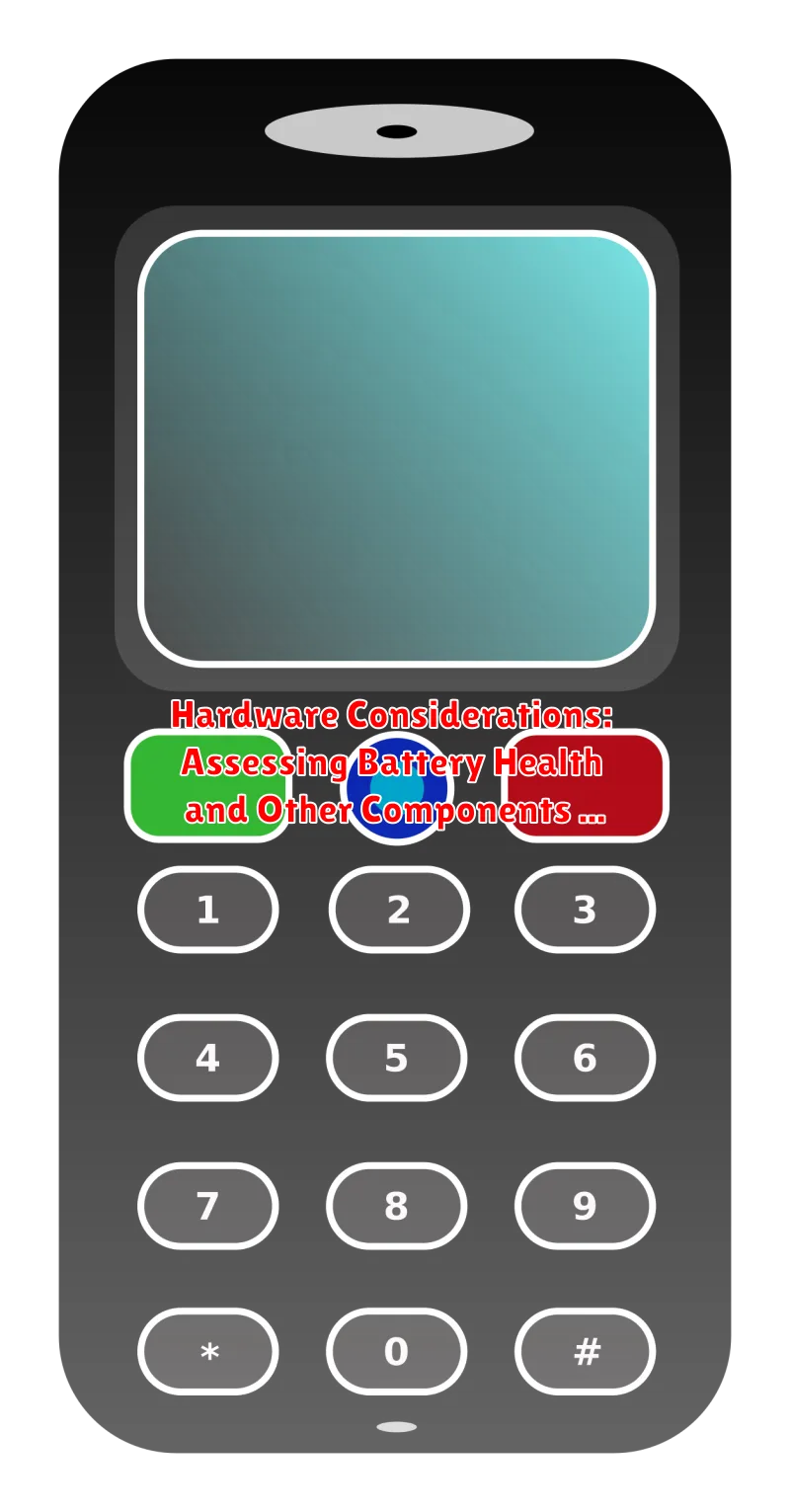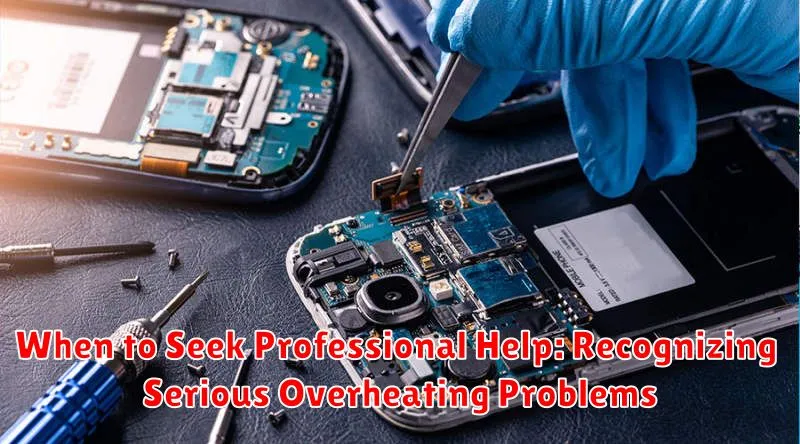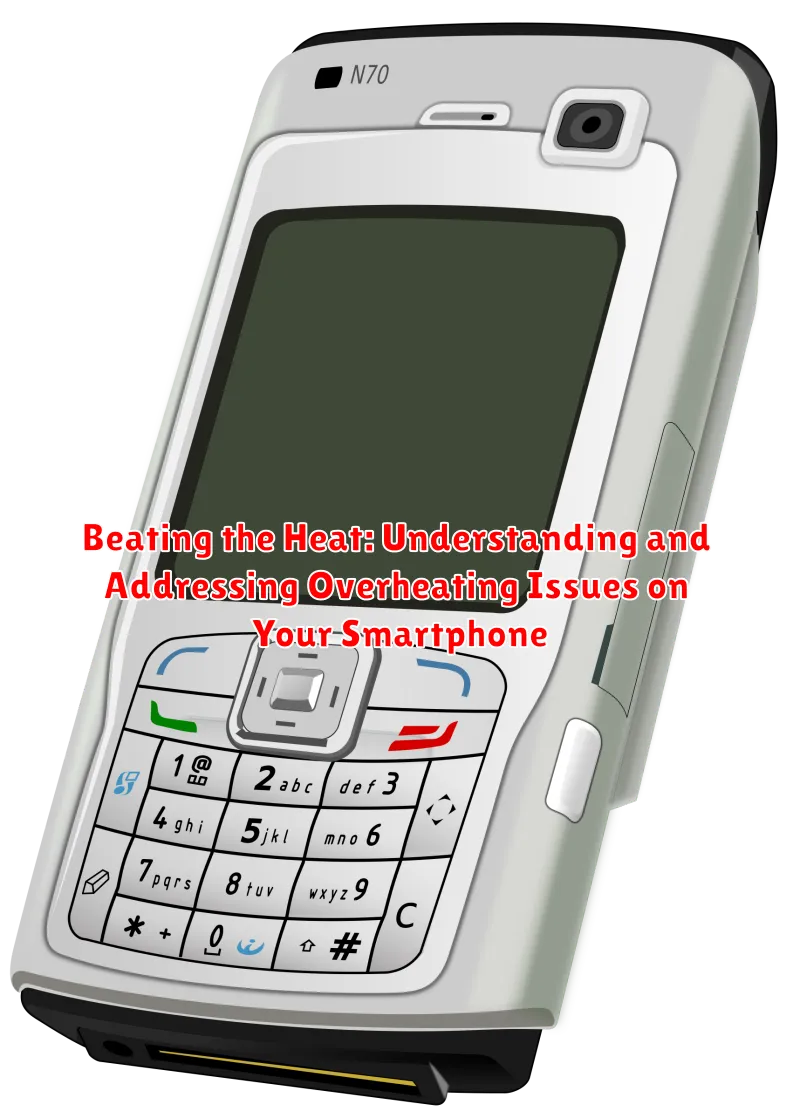Is your smartphone feeling a little too warm lately? Are you noticing a decrease in performance, shorter battery life, or even unexpected shutdowns? You’re not alone. Overheating is a common issue that plagues many smartphones, regardless of their make or model. Understanding the causes of smartphone overheating and learning effective cooling techniques is crucial for maintaining the health and longevity of your device. This article will delve into the factors that contribute to this problem, offering practical solutions to help you keep your smartphone running smoothly and efficiently.
From the Central Processing Unit (CPU) working overtime during intense gaming sessions to prolonged exposure to direct sunlight, various elements can cause your smartphone to overheat. Ignoring these warning signs can lead to long-term damage and costly repairs. This comprehensive guide, “Beating the Heat: Understanding and Addressing Overheating Issues on Your Smartphone,” provides actionable strategies to prevent overheating, optimize your device’s performance, and ultimately extend its lifespan. We’ll explore topics ranging from managing background apps to making informed decisions about charging practices and even considering phone cases.
Why Your Phone Overheats: Identifying the Root Causes
Several factors can contribute to a smartphone overheating. Understanding these root causes is the first step in preventing the issue.
Common Culprits:
- Processor-Intensive Tasks: Running demanding applications like games, video editing software, or augmented reality apps can push the processor to its limit, generating significant heat.
- Prolonged Usage: Extended periods of use, especially when combined with charging, can cause the device to overheat.
- Software Issues: Bugs in the operating system or specific apps can lead to excessive background processes, straining the phone’s resources.
- Charging Problems: Using a faulty charger or charging the phone in a hot environment can lead to overheating during the charging process.
- Malware: Malicious software can secretly run in the background, consuming resources and generating heat.
- Direct Sunlight: Exposing your phone to direct sunlight for an extended period can significantly raise its internal temperature.
Identifying the specific cause requires careful observation of your usage patterns and app activity.
Recognizing the Signs: Early Warning Signals of Overheating
It is crucial to recognize the early warning signs of overheating to prevent potential damage to your smartphone. Ignoring these signs can lead to reduced performance, battery degradation, and even permanent hardware failure.
Common Indicators of Overheating:
- Noticeably Hot to the Touch: The phone feels uncomfortably warm, particularly on the back or near the charging port.
- Slow Performance: Apps take longer to load, and the phone responds sluggishly to commands.
- Battery Draining Quickly: The battery depletes at an unusually fast rate, even with minimal usage.
- App Crashes: Applications unexpectedly close or become unresponsive.
- Warning Messages: The phone displays an alert indicating that it is overheating and may need to shut down.
- Difficulty Charging: The phone may stop charging or charge very slowly.
If you observe any of these signs, take immediate action to cool down your phone and prevent further damage. Prolonged exposure to high temperatures can significantly shorten the lifespan of your device.
Immediate Actions: Steps to Cool Down Your Phone Quickly
When your smartphone begins to overheat, swift action is crucial to prevent potential damage. The following steps should be implemented immediately:
- Power Off: The most effective initial step is to completely power off your device. This allows all processes to cease and the phone to cool down naturally.
- Remove from Direct Sunlight: Relocate your phone to a cooler, shaded area, away from direct sunlight or heat sources.
- Disable Resource-Intensive Features: Turn off features like GPS, Bluetooth, and Wi-Fi, as these can contribute to heat generation.
- Close Background Apps: Force close any apps running in the background, as these can continue to use processing power and generate heat.
- Remove the Case: If your phone has a case, remove it to allow for better airflow and heat dissipation.
Avoid placing your phone in the freezer or refrigerator, as the rapid temperature change can cause condensation and potentially damage internal components. Instead, focus on allowing the device to cool down gradually in a controlled environment.
Software Solutions: Optimizing Settings to Prevent Overheating
Optimizing your smartphone’s software settings can significantly reduce the risk of overheating. Several adjustments can minimize the strain on your device’s processor and battery, thus lowering its operating temperature.
Display Settings
Reducing screen brightness and setting a shorter screen timeout duration are effective measures. Consider enabling adaptive brightness, which automatically adjusts brightness based on ambient light levels. Additionally, lowering the screen resolution, if your device allows, can also ease the burden on the GPU.
Background App Refresh
Limiting or disabling background app refresh prevents apps from constantly running in the background, consuming resources and generating heat. Review app permissions and disable background activity for apps that don’t require it.
Location Services
Frequent use of location services can contribute to overheating. Set location access to “While using the app” or disable it altogether for apps that don’t genuinely need it. Consider turning off location services entirely when not actively using mapping or navigation apps.
Software Updates
Ensure your device’s operating system and apps are up to date. Updates often include performance improvements and bug fixes that can address overheating issues.
Hardware Considerations: Assessing Battery Health and Other Components

Battery health is a critical factor in smartphone overheating. As batteries age, their internal resistance increases, leading to greater heat generation during charging and usage. Check your phone’s battery health in settings; if significantly degraded, consider replacement.
Other hardware components can also contribute to overheating. A malfunctioning charging port can cause inefficient charging, resulting in excessive heat. Similarly, damaged or poorly functioning internal components like the CPU or GPU can generate more heat than normal, especially during intensive tasks like gaming or video recording.
Consider these points:
- Battery Age: Older batteries are more prone to overheating.
- Charging Port: Inspect for damage or debris.
- Internal Components: Malfunctions can lead to increased heat production.
Preventive Measures: Habits to Avoid Overheating Your Phone
To maintain optimal phone temperature and prevent overheating, adopting certain habits is crucial. Avoiding prolonged exposure to direct sunlight, especially during peak hours, is paramount. Direct sunlight can significantly raise your phone’s internal temperature.
Furthermore, refrain from leaving your phone in enclosed, poorly ventilated spaces, such as a car dashboard on a hot day. The confined environment traps heat, exacerbating the risk of overheating. Consider using a sunshade in your vehicle to mitigate this issue.
Limit the use of resource-intensive applications for extended periods. Games, video streaming, and augmented reality apps can strain your phone’s processor and generate excessive heat. Taking periodic breaks can help alleviate this.
Additionally, avoid charging your phone in direct sunlight or in environments that are already warm. Charging generates heat, and combining it with external heat sources further elevates the phone’s temperature. Consider charging in a cooler environment.
Impact of Overheating: Potential Damage to Your Device
Overheating can have detrimental effects on your smartphone’s performance and longevity. Prolonged exposure to high temperatures can lead to several hardware and software issues.
One of the primary concerns is battery degradation. Excessive heat accelerates the chemical reactions within the battery, reducing its capacity and lifespan. This results in shorter battery life and the need for more frequent charging.
Furthermore, overheating can affect the phone’s processor and other internal components. Sustained high temperatures can cause thermal throttling, where the processor reduces its clock speed to prevent further damage. This leads to noticeable performance slowdowns and lag.
In severe cases, overheating can cause permanent damage to the phone’s motherboard or other critical components, rendering the device unusable. Additionally, the adhesive used to hold the phone together can weaken, leading to screen separation or other structural issues.
Finally, software glitches and data corruption can also occur as a result of overheating, potentially leading to data loss and requiring a factory reset of the device.
When to Seek Professional Help: Recognizing Serious Overheating Problems

While many overheating issues can be resolved with simple troubleshooting, certain scenarios warrant professional intervention. It is crucial to recognize these situations to prevent further damage to your device. Consistent, severe overheating, even after implementing recommended solutions, is a primary indicator.
Consider seeking professional help if you observe the following:
- Physical damage: Bulging battery, cracked screen due to heat, or melted components.
- Functional impairments: The phone shuts down unexpectedly, fails to charge, or experiences significant performance degradation after overheating incidents.
- Recurring issues: Overheating persists despite optimizing settings and usage habits.
- Unusual smells: A burning plastic or chemical odor emanating from the device.
A qualified technician can diagnose the underlying cause, which may involve faulty hardware, battery degradation, or internal component failures. Attempting advanced repairs yourself without proper knowledge and tools can further damage the device and void any remaining warranty. Prioritize a professional assessment to ensure the safety and longevity of your smartphone.
Managing Apps: Identifying Resource-Intensive Applications
Certain applications are notorious for consuming a disproportionate amount of your smartphone’s resources, thereby contributing significantly to overheating. Identifying and managing these applications is crucial for maintaining optimal device temperature.
Monitoring Battery Usage: Most smartphones have built-in tools to monitor battery consumption by individual apps. Access this feature in your phone’s settings (usually under “Battery” or “Power Management”). The list will display apps ranked by their battery usage percentage.
Identifying Culprit Apps: Look for apps with high battery consumption, especially those you don’t use frequently or that run in the background. Consider these apps as potential causes of overheating. Common culprits include:
- Gaming Apps: Graphic-intensive games often strain the CPU and GPU.
- Social Media Apps: Apps like Facebook, Instagram, and TikTok can constantly run in the background, refreshing data and consuming power.
- Streaming Apps: High-resolution video streaming services (e.g., Netflix, YouTube) can also cause overheating.
- Navigation Apps: GPS-based navigation apps (e.g., Google Maps, Waze) can be resource-intensive.
Taking Action: Once you’ve identified resource-intensive apps, consider the following:
- Force Quitting: Close apps completely when not in use.
- Limiting Background Activity: Restrict background data usage for problematic apps.
- Uninstalling: If you rarely use an app that consumes significant battery, consider uninstalling it altogether.
- Alternative Apps: Look for less resource-intensive alternatives for certain apps.
By actively managing your apps and understanding their resource consumption, you can significantly reduce the likelihood of your phone overheating.
Understanding Environmental Factors: How External Conditions Affect Phone Temperature
External environmental conditions significantly impact a smartphone’s internal temperature. High ambient temperatures, especially during direct sunlight exposure, can rapidly increase the device’s heat, leading to overheating.
Direct Sunlight: Prolonged exposure to direct sunlight is a primary contributor to overheating. Dark-colored phones absorb more heat.
Ambient Temperature: Using your phone in hot weather, such as during a heatwave, or leaving it in a hot car can cause the internal temperature to rise quickly.
Humidity: While less direct than temperature, high humidity can impede the phone’s ability to dissipate heat efficiently.
Poor Ventilation: Enclosing your phone in a case that restricts airflow, particularly in warm environments, can exacerbate overheating problems.
Users should be mindful of these factors and take precautions to protect their devices from extreme environmental conditions to prevent overheating.

